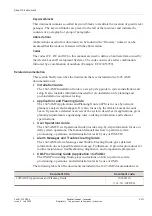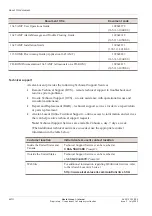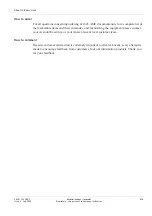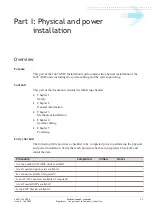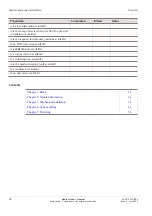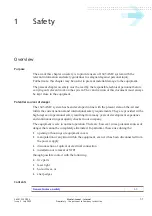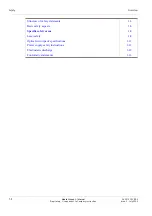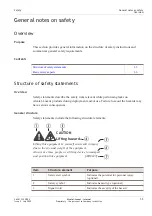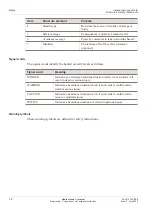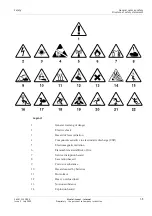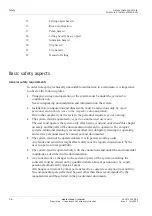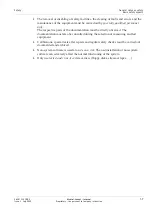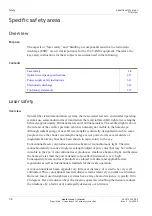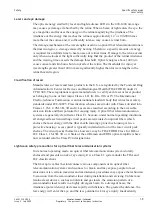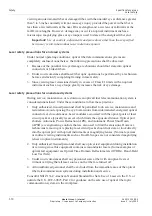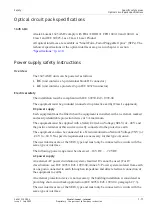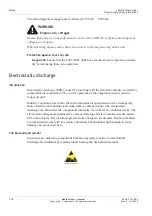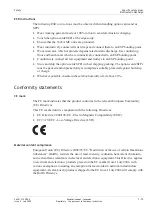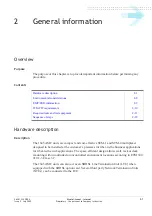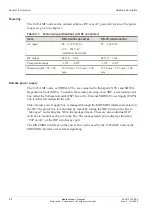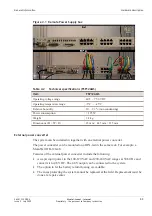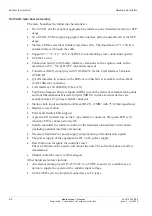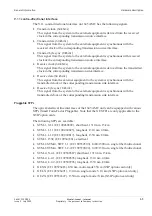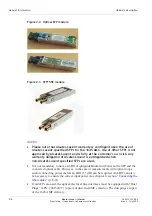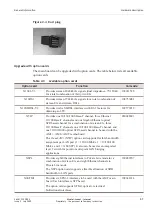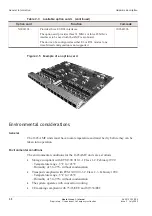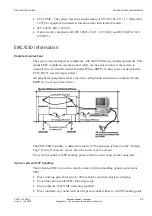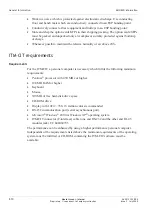
Lasers and eye damage
The optical energy emitted by laser and high-radiance LEDs in the 400-1400 nm range
may cause eye damage if absorbed by the retina. When a beam of light enters the eye, the
eye magnifies and focuses the energy on the retina magnifying the irradiance. The
irradiance of the energy that reaches the retina is approximately 10
5
or 100,000 times
more than at the cornea and, if sufficiently intense, may cause a retinal burn.
The damage mechanism at the wavelengths used in an optical fiber telecommunications is
thermal in origin i.e., damage caused by heating. Therefore, a specific amount of energy
is required for a definite time to heat an area of retinal tissue. Damage to the retina occurs
only when one looks at the light sufficiently long that the product of the retinal irradiance
and the viewing time exceeds the damage threshold. Optical energies above 1400 nm
cause corneal and skin burns but do not affect the retina. The thresholds for injury at
wavelengths greater than 1400 nm are significantly higher than for wavelengths in the
retinal hazard region.
Classification of lasers
Manufacturers of lasers and laser products in the U.S. are regulated by the Food and Drug
Administration's Center for Devices and Radiological Health (FDA/CDRH) under 21
CFR 1040. These regulations require manufacturers to certify each laser or laser product
as belonging to one of four major Classes I, II, lla, IlIa, lllb, or IV. The International
Electro-technical Commission is an international standards body that writes laser safety
standards under IEC-60825. Classification schemes are similar with Classes divided into
Classes 1, 1M, 2, 2M, 3B, 3R and 4. Lasers are classified according to the accessible
emission limits and their potential for causing injury. Optical fiber telecommunication
systems are generally classified as Class I/1, because, under normal operating conditions,
all energized laser transmitting circuit packs are terminated on optical fibers which
enclose the laser energy with the fiber sheath forming a protective housing. Also, a
protective housing / access panel is typically installed in front of the laser circuit pack
shelves. The circuit packs themselves, however, may be FDA/CDRH Class I or IIIb or
IEC Class 1, 1M, 3B, 3R or 4. State of the art Raman and EDFA optical amplifiers have
now extended into the Class IV/4 designations.
Lightwave safety precautions for optical fiber telecommunication systems
In its normal operating mode, an optical fiber telecommunication system is totally
enclosed and presents no risk of eye injury. It is a Class I/1 system under the FDA and
IEC classifications.
The fiber optic cables that interconnect various components of an optical fiber
telecommunication system can disconnect or break, and may expose people to laser
emissions. Also, certain measures and maintenance procedures may expose the technician
to emission from the semiconductor laser during installation and servicing. Unlike more
familiar laser devices, such as solid-state and gas lasers, the emission pattern of a
semiconductor laser results in a highly divergent beam. In a divergent beam, the
irradiance (power density) decreases rapidly with distance. The greater the distance, the
less energy will enter the eye, and the less potential risk for eye injury. Inadvertently
Safety
Specific safety areas
Laser safety
...................................................................................................................................................................................................................................
...................................................................................................................................................................................................................................
365-313-103R8.0
Issue 2
July 2009
Alcatel-Lucent – Internal
Proprietary – Use pursuant to Company instruction
1-9

